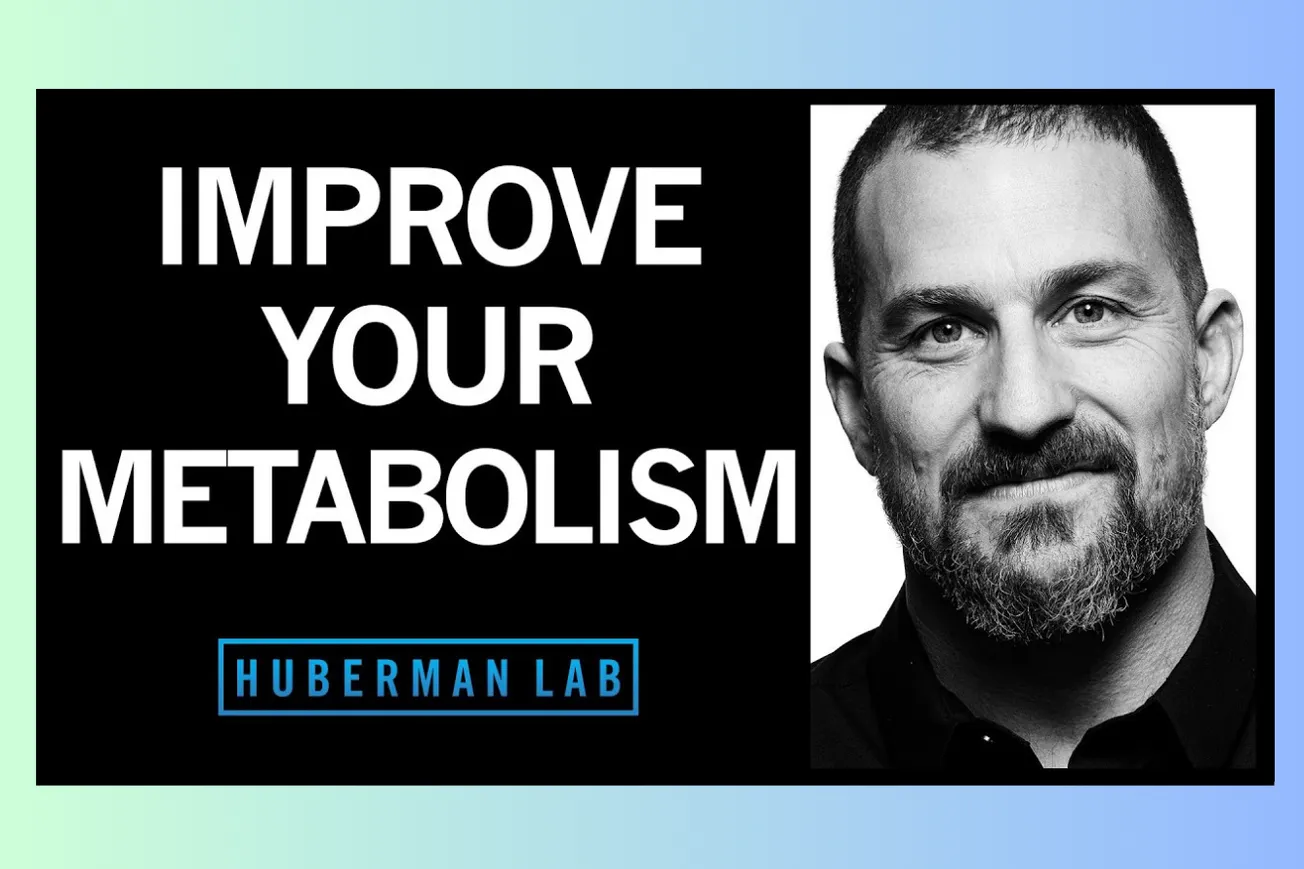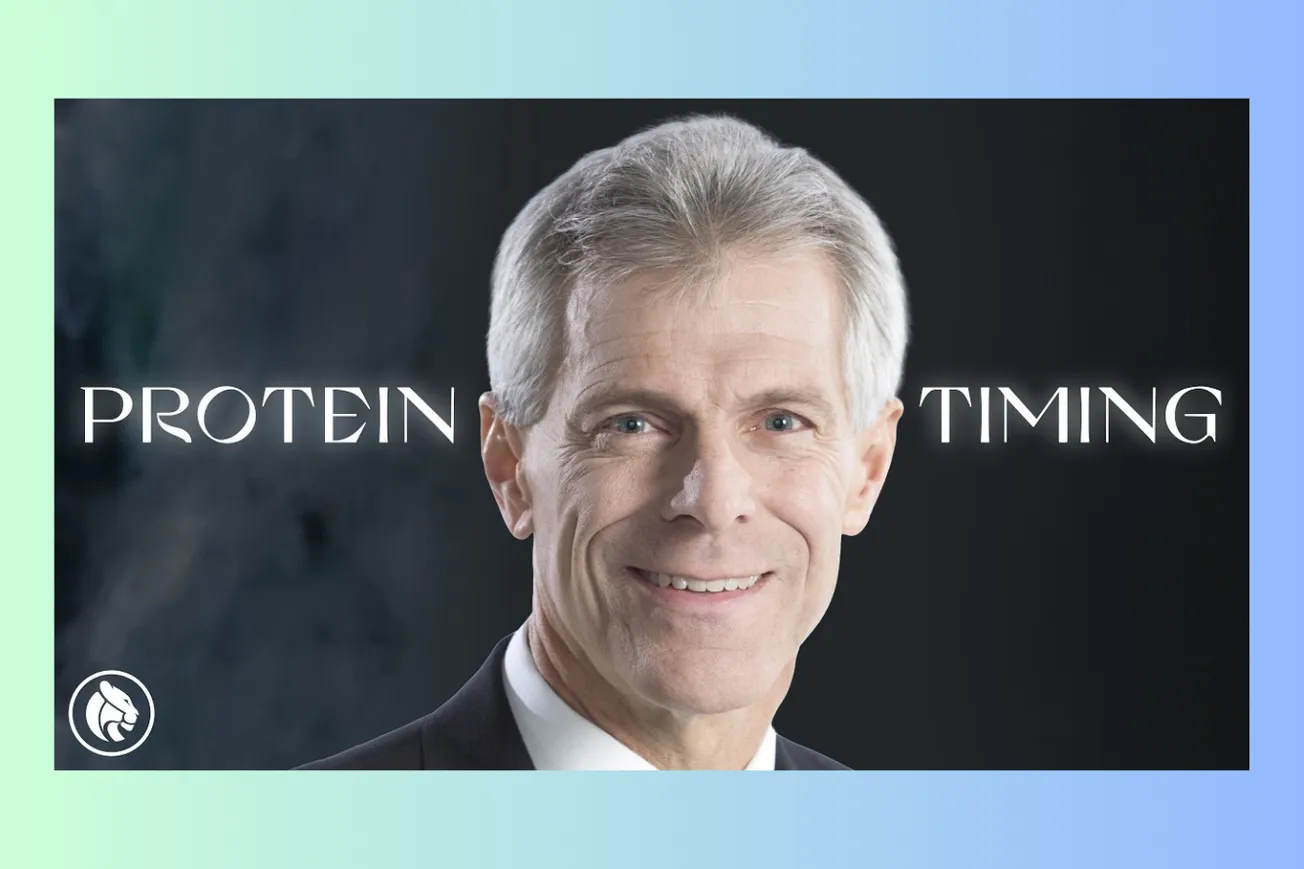Table of Contents
Unlock the secrets to controlling your metabolism by understanding the critical roles of thyroid and growth hormone, influenced by factors like diet, sleep, exercise, and even temperature exposure. Learn science-backed tools to optimize these powerful hormones for better energy, body composition, and overall health.
Key Takeaways
- Hormones like thyroid and growth hormone govern metabolism, impacting energy use, tissue growth, repair, and brain function throughout life.
- Thyroid hormone (T3) production relies on sufficient iodine, L-tyrosine, and selenium; deficiencies can significantly impair metabolism.
- Growth hormone release peaks during early-night slow-wave sleep and can be substantially boosted by specific exercise protocols and heat exposure.
- Diet significantly impacts these hormones; processed foods, certain "clean" diets lacking key nutrients, or very low-carb diets can disrupt thyroid function.
- Specific behaviors like timed exercise, optimizing sleep, and safe sauna use offer non-pharmacological ways to enhance growth hormone levels.
- While supplements like arginine or L-citrulline can increase growth hormone, they don't combine additively with exercise-induced increases.
- Your brain consumes about 75% of your resting metabolic energy needs, highlighting the importance of these hormones for cognitive function.
- Peptide therapies (e.g., Sermorelin) exist to stimulate hormone release but carry risks and require careful consideration and medical guidance.
- Age-related decline in growth hormone is significant (two-to-threefold drop between 30-40), but lifestyle factors can help offset this.
Timeline Overview
- 00:00-15:00 — Introduction to hormones, metabolism definition, brain's energy consumption, debunking food shape myths, clarifying Stevia vs. artificial sweeteners.
- 15:00-30:00 — Deep dive into thyroid hormone (T3/T4), the HPT axis (brain-pituitary-thyroid), the crucial role of iodine, L-tyrosine, and selenium, goiter explanation.
- 30:00-45:00 — Selenium sources (Brazil nuts dominate), potential selenium deficiency risks even in "clean" diets, impact of cruciferous vegetables and ketogenic diets on thyroid, other benefits of iodine (reducing CRP, IL-6).
- 45:00-1:00:00 — Introduction to growth hormone (GH), the HPG axis (brain-pituitary), age-related GH decline, risks of GH injections (organ growth), importance of slow-wave sleep for GH release, low-dose melatonin potential.
- 1:00:00-1:15:00 — Impact of meditation and delta waves on GH, exercise protocols for maximizing GH (warm-up, intensity, duration ~60 mins, avoiding failure, cool-down), sex differences in GH response timing during exercise.
- 1:15:00-1:30:00 — Role of IGF-1 downstream of GH, supplement strategies for GH (arginine, L-citrulline, ornithine), cautions about GI issues and interaction with exercise, L-citrulline potentially better than arginine.
- 1:30:00-1:45:00 — Profound impact of sauna/heat exposure on GH release (up to 16-fold increase with specific protocols), safety warnings about hyperthermia, practical ways to achieve heat exposure, peptide therapies (Sermorelin, etc.), conclusion.
Understanding Hormones and Metabolism
- Hormones are chemical messengers produced in one part of the body that travel to act on other tissues, controlling development, function, and gene expression throughout life. Metabolism isn't just about weight; it's the sum total of energy consumption and utilization by the body's cells for maintenance, growth, and repair.
- Contrary to popular belief, your brain is the most metabolically demanding organ, consuming about 75% of your basal metabolic energy needs just for thinking and basic function, even when physically inactive.
- The idea that the shape of a food (like walnuts for the brain or beets for the heart) indicates its health benefit for a specific organ is unfounded in science, although the nutrients within those foods (like fatty acids in walnuts or arginine in beets) can be beneficial.
- There's a fundamental logic to hormone release: releasing hormones typically originate from the brain (hypothalamus), stimulating hormones come from the pituitary gland, which then prompts target glands (like thyroid, gonads) to release their specific hormones.
- Highly processed foods often contain emulsifiers that can damage the gut lining and interfere with satiety signals (like CCK) telling the brain to stop eating. While artificial sweeteners can have negative effects, Stevia, a non-caloric natural sweetener, appears less likely to harm the gut microbiome based on current evidence.
- Metabolism can be increased by shifting body composition towards more muscle mass, as muscle tissue burns more energy at rest compared to fat tissue.
Thyroid Hormone: The Metabolic Thermostat
- The thyroid gland, located near the Adam's apple, produces T4 and T3 hormones in response to Thyroid Stimulating Hormone (TSH) from the pituitary, which itself is triggered by Thyrotropin Releasing Hormone (TRH) from the brain. T3 is the primary active form impacting metabolism.
- Thyroid hormone (T3) acts widely across the body (muscle, liver, bone, fat) to promote the utilization and conversion of energy sources like fats and sugars into usable cellular energy (ATP), essentially setting the body's metabolic rate.
- Production of thyroid hormones requires three key ingredients:
- Iodine: Essential component, sourced mainly from iodized salt, seaweed, kelp, and proximity to oceans (can be absorbed via air). Insufficient iodine leads to goiter, where the thyroid enlarges trying to compensate.
- L-Tyrosine: An amino acid precursor (also for dopamine), found in meats, nuts, and some plants.
- Selenium: Crucial for the interaction between iodine and tyrosine. Brazil nuts are exceptionally high sources (550mcg in 6-8 nuts), far exceeding other sources like fish, meat, eggs, or lentils. Many people, especially those on restrictive diets, may not get enough.
- Sufficient iodine intake is linked to lower levels of inflammatory markers like C-reactive protein (CRP) and Interleukin-6 (IL-6), suggesting an anti-inflammatory benefit beyond metabolism.
- Thyroid hormone plays a key role in glucose uptake by tissues like muscle and bone, contributing to energy utilization and potentially increasing bone mineral density, which aids injury recovery.
- Diets very high in cruciferous vegetables (like cabbage, broccoli) contain compounds that can interfere with thyroid function and may increase iodine requirements. Similarly, very low-carbohydrate or ketogenic diets can lower T3/T4 levels because carbohydrate intake influences thyroid hormone production. This might explain rapid weight regain when reintroducing carbs after keto.
Growth Hormone: Repair, Growth, and Vitality
- Growth Hormone (GH) follows a similar release pathway: Growth Hormone Releasing Hormone (GHRH) from the brain signals the pituitary to release GH into the bloodstream. GH then acts broadly on tissues like muscle, ligaments, bone, and fat to increase metabolism, repair, and growth.
- GH release peaks during the early part of the night, specifically during slow-wave (deep) sleep, which is characterized by large delta wave brain activity. Getting sufficient deep sleep is crucial for optimizing natural GH release.
- Eating large meals, particularly high-sugar ones, within about two hours of bedtime significantly suppresses this natural nighttime GH release because high insulin/glucose levels inhibit it.
- GH levels decline significantly with age, particularly a sharp two-to-threefold drop occurs between the ages of 30 and 40, unlike testosterone which can remain high even into old age for some individuals. This decline contributes to slower recovery, increased body fat, and reduced metabolism.
- Much of GH's positive effects, including benefits for memory and cognition, are mediated through Insulin-like Growth Factor 1 (IGF-1), which is released primarily by the liver in response to GH.
- Exogenous GH injection (prescription or otherwise) carries risks, including unwanted growth of internal organs and potentially accelerating tumor growth, and it suppresses the body's natural production.
Boosting Growth Hormone Naturally: Sleep & Timing
- Optimizing sleep quality, specifically maximizing early-night slow-wave sleep, is paramount for natural GH production. Tools for sleep optimization were covered in previous episodes.
- Avoiding meals, especially sugary ones, 2-3 hours before sleep prevents the insulin/glucose spike that suppresses the critical nighttime GH pulse. This directly supports higher GH levels during sleep.
- Low-dose melatonin (around 500 micrograms, much lower than typical supplement doses of 1-12mg) might help shift sleep architecture towards more delta-wave sleep early in the night, potentially enhancing GH release, though more research is needed. Standard high-dose melatonin is generally not recommended due to potential hormonal side effects.
- Because delta waves trigger GH release, practices that induce these brainwaves during waking, like certain types of meditation (e.g., 20 minutes daily of focused-breathing meditation), could potentially increase GH levels outside of sleep. Evidence for binaural beats achieving this reliably is currently lacking.
- Maintaining a consistent sleep-wake cycle and ensuring sufficient total sleep duration supports the natural circadian rhythm of GH release.
- The sharp decline in GH after age 30 makes proactively using these behavioral strategies particularly relevant for maintaining youthful levels and mitigating age-related metabolic slowdown and recovery issues.
Boosting Growth Hormone Naturally: Exercise & Temperature
- Specific exercise protocols can dramatically increase GH levels (300-500%), both during the session and the following night, potentially offsetting age-related decline. The key factors are:
- Warm-up: Properly warming the body (increasing core temperature) before the main workout enhances the GH response.
- Intensity & Duration: High-intensity resistance training or endurance work, sustained for approximately 60-75 minutes, yields the best results. Avoid training to absolute failure.
- Low Glucose: Exercising in a relatively fasted state (avoiding sugary drinks during the workout) is crucial, as high insulin/glucose blunts GH release.
- Cool-down: Allowing body temperature to return to normal relatively quickly after exercise seems important for securing the GH boost during the following night's sleep. Prolonged elevated temperature might inhibit this secondary release.
- There are sex differences in the timing of the GH peak during exercise: women tend to experience the largest GH/IGF-1 spike earlier (within the first 30 minutes), while men see the peak later, closer to the 60-minute mark.
- Deliberate, safe heat exposure (sauna) has shown profound effects, increasing GH release up to 16-fold (1600%) with repeated sessions. A typical protocol involves cycles like 20 minutes in a sauna (80-100°C / 176-212°F), followed by 30 minutes of cooling, repeated, performed over consecutive days. Extreme caution is necessary due to hyperthermia risks.
- Sauna use also significantly decreases the stress hormone cortisol, offering another health benefit, but studies show it doesn't directly impact testosterone or DHEA levels.
- Alternative methods for heat exposure include wearing sweatsuits during exercise (with caution), or creating a hot, steamy environment (like in a bathroom with a hot shower running) while wearing warm clothing.
Supplements and Peptides for Growth Hormone
- The amino acid arginine can stimulate significant GH release (up to 400-600% increase) when taken orally (3-10g range, though >9g may blunt effects) or via IV, ideally on an empty stomach (low glucose) or before sleep. However, high oral doses often cause gastrointestinal distress.
- Taking arginine before exercise does not stack additively with exercise-induced GH release; the effects seem to cancel each other out, resulting in a similar GH increase as either intervention alone. You don't get a double benefit.
- L-citrulline supplementation may be a more effective way to increase blood arginine levels than taking arginine itself, due to better absorption and conversion pathways. It also significantly increases nitric oxide, improving blood flow and reducing fatigue. L-citrulline shows small but significant GH increases in studies (males only tested so far).
- Both arginine and L-citrulline cause vasodilation (blood vessel widening) which lowers blood pressure – this needs careful consideration, especially for those with heart conditions. Examine.com is a good resource for detailed effects.
- Peptide therapies (e.g., Sermorelin, Ipamorelin) are prescription compounds that mimic or stimulate the body's own releasing hormones (like GHRH) to increase GH production from the pituitary, rather than supplying GH directly.
- While potentially effective and possibly avoiding some direct suppression of natural production compared to injecting GH itself, these peptides still carry risks, can have long-term gene expression effects, and require medical supervision. They are used clinically but also off-label for performance/longevity.
Bottom Line
Thyroid and growth hormone are pivotal for lifelong health, impacting metabolism, energy, repair, and cognition; optimizing them requires attention to diet (iodine, selenium, tyrosine), sleep quality, and specific exercise patterns. Deliberate strategies like timed exercise or safe heat exposure can significantly boost growth hormone, potentially offsetting age-related decline without resorting to riskier exogenous hormones or peptides.









